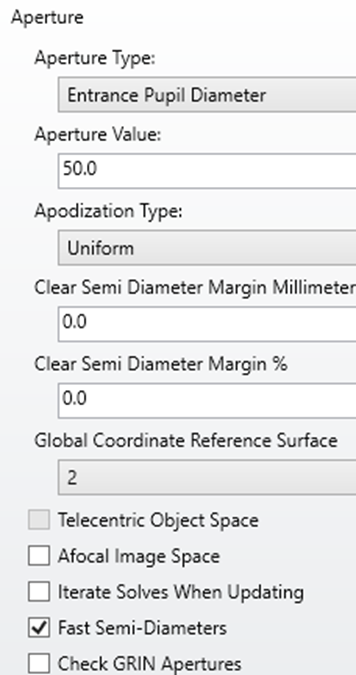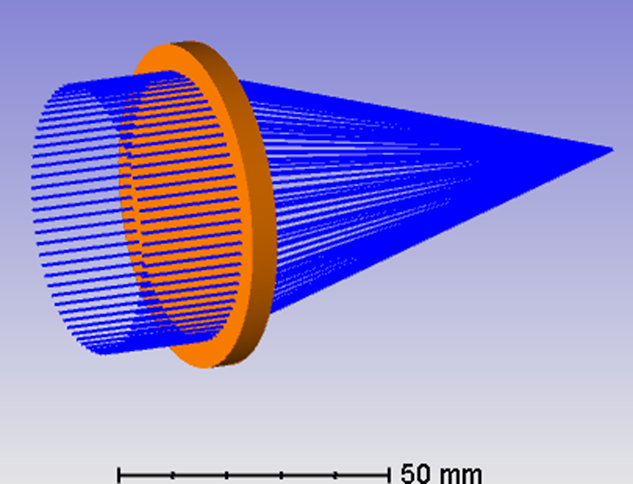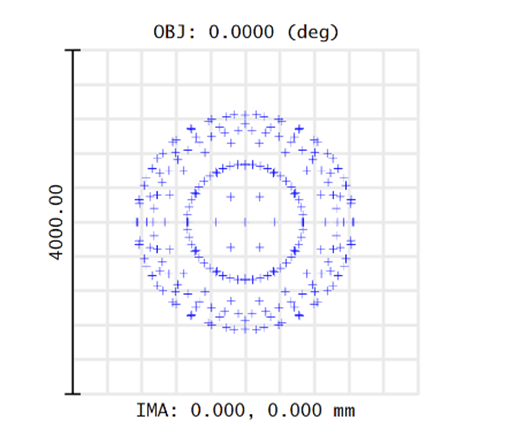Fresnel lens is composed of a series of concentric grooves or steps that bend light, allowing it to focus or spread depending on the design. This design reduces the amount of material required, making the lens much lighter and cheaper to produce compared to traditional lenses with similar optical properties.

The stepped construction of a Fresnel lens allows for a significant reduction in size and weight compared to conventional lenses with similar optical properties. This compactness makes them ideal for applications where space is limited. Due to their reduced material requirements and simpler manufacturing process, Fresnel lenses are generally more cost-effective to produce than traditional lenses. This affordability makes them attractive for mass-produced items like magnifying sheets, overhead projectors, and solar concentrators.
Below is a model of Fresnel lens in Zemax. This model is built in mixed mode, i.e. sequential and non-sequential mode. The Fresnel lens type can be found in non-sequential mode. In this model, Fresnel 2 is selected. Such object type denotes an idealized Fresnel lens object having a circular or rectangular shape, with one face an ideal Fresnel lens with either radial or cylindrical polynomial aspheric terms over a base conic asphere. This Fresnel lens uses the approximation that the Fresnel faces are infinitesimally small, and may be ignored for purposes of computing the ray-object intersection point.
The substrate shape is either a flat disk or a rectangle. The front face of the substrate consists of a radial or cylindrical Fresnel lens. The radial profile is defined by a sag expression identical to the even asphere surface:

This Fresnel lens is defined with 5 mm thickness and with α1-8 set to zero. The coefficients on the even radial powers of r if "Is Cylinder" is zero. Radial Height is the maximum radial aperture of the lens if radially symmetric, or the y half height if cylindrically symmetric.
![]()
In System Explorer under sequential mode, a 50 mm diameter entrance pupil with uniform apodization is defined as below. Is Cylinder? If zero, the Side 0 Fresnel surface will be radial. Radius. The base radius of curvature. This is one over the value "c" in the sag expressions above.

The field is set as zero and a single wavelength of 587nm is selected as below.

In sequential mode Lens Data, an infinite distance light is projected to the Fresnel lens modeled in non-sequential mode. The Exit location in Z direction is 20 mm after the entrance of the Fresnel lens.

The image plane solved by Marginal Image Height is 66.5 mm away from the exit of the Nonsequential component. The Spot Diagram at the image plane is shown below. The RMS radius is 912 um. The geometry radius is 1256 um.

The geometrical encircled energy referring to the centroid is shown below.

The wavefront map below displays the wavefront error across the pupil. Expected big difference is seen at center of pupil and edge of pupil. By default, the wavefront aberration is referenced to the reference sphere for the wavelength being used.

The Zemax model above demonstrate a typical model of Fresnel lens. With the built-in surface in Non-sequential mode, and mixed modeling feature, the imaging quality of the Fresnel lens can be analyzed in sequential mode. Overall, the unique features of Fresnel lenses make them valuable components in many optical systems where space, weight, cost, and performance are important considerations.
Apr 22, 2024 8:44:03 AM
